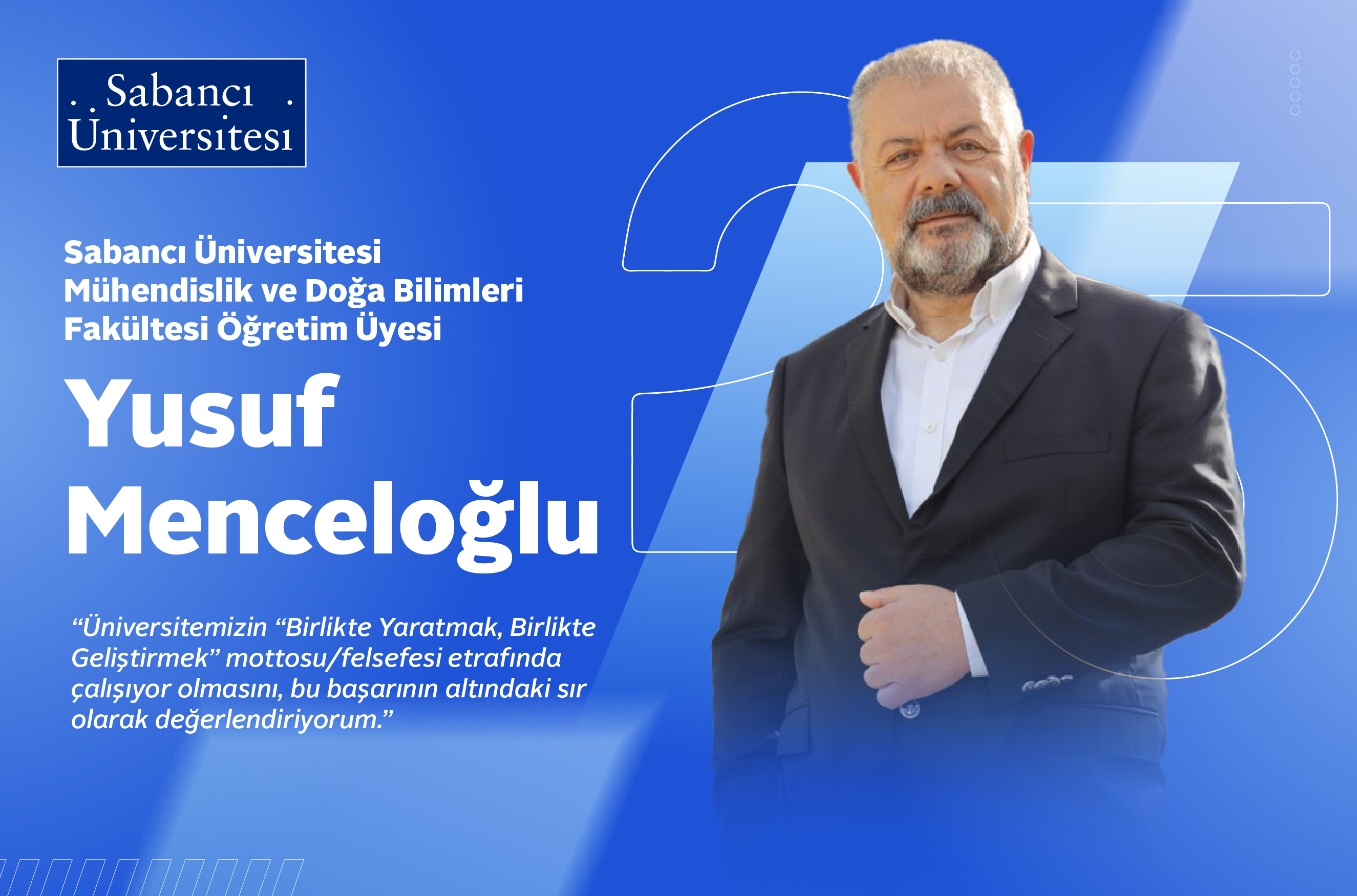12/08/2025
A Look at Our University's Early Years with Yusuf Menceoğlu
We had a pleasant conversation with Prof. Dr. Yusuf Menceloğlu, a faculty member in the Faculty of Engineering and Natural Sciences, in which he shared with us the infrastructure work carried out during our university's founding years, its developments, and his feelings about our university.
Could you briefly introduce yourself? How long have you been at Sabancı University? Could you tell us about your work?
I have been at Sabancı University for approximately 25 years. I joined the university in August 2000, one year after the start of education. My education and doctoral studies focused on polymeric materials, and my postdoctoral work focused on phase-forming systems at the nanoscale. The "Toward the Next Industrial Revolution: National Nanotechnology Initiative," established in 2000 at the initiative of then-US President Bill Clinton, led to a surge in nanotechnology research worldwide. Similarly, we, in the Sabancı University Materials Science program, established the necessary infrastructure to conduct research in this field and conducted research on nanotechnology's fundamental research and industrial applications, namely, its engineering. My work primarily focuses on first- and second-generation nanomaterials of societal importance. They involve technologies aimed at addressing complex problems such as energy, the environment, health, and food. Many of these solutions have been patented, and some have been licensed.
During your time at Sabancı University, do you have any interesting memories and/or details you'd like to share?
When I first arrived at the university, we began intensive work on establishing the research infrastructure and selecting and purchasing equipment for materials research laboratories. At the beginning of 2001, Güler Sabancı announced that the Sabancı Foundation would provide two million USD in funding for the Materials and the Electronics programs each. On the evening of February 21, 2001, while we were in Germany to negotiate equipment purchases for the infrastructure installation phase and conduct on-site inspections, the economic crisis known as Black Wednesday struck. The increasing demand for foreign currency and overnight interest rates reaching 2000% led us to reasonably suspect that our investment plans would be affected. While we planned to cancel all travel plans and return, I can confidently say that the directive of our first Secretary General, the late Hüsnü Paçacıoğlu, "We are continuing our investments in our brains. Don't disrupt your schedule," laid the foundation for our current success. This initial investment led to the creation of research laboratories and the successful work carried out in these laboratories. Later, with a $35 million investment supported by the Ministry of Development and the Sabancı Foundation, we established the SUNUM Nanotechnology Research and Application Center. Subsequently, with contributions from Kordsa, the Ministry of Development, and the University, we invested $40 million to establish the Integrated Manufacturing Technologies Research and Application Center for future manufacturing technologies and precision aviation applications. It is a distinct pleasure to be involved in all of this work, and our university ranks among the top universities worldwide and is a leader among entrepreneurial and innovative universities in our country.
Since its founding, what are the distinguishing features of our university, which has been 25 years old, and what innovations it has introduced to the field of higher education? (Research university/freedom to choose a program, etc.)
Sabancı University has brought many distinct approaches and innovations to the national agenda that distinguish it from other universities in our country. Some of these have been adopted and implemented by other universities. Our Research and Graduate Policies Directorate later became a technology transfer office across all universities. Similar civic involvement projects undertaken by our undergraduate students have begun to be implemented by many universities. Our most important feature, which other universities desire but cannot afford, is the freedom of our students to choose a program and provide them with practical training tailored to their interests and competencies. This is the key to our graduates' rapid employment upon graduation. The fact that a large percentage of our faculty members join our university after completing non-academic experience is key to our position as a research university and our position as one of the most innovative and entrepreneurial.
Our university has achieved many successes in just 25 years. What can you say about its current standing, its position, and its achievements?
As mentioned above, the contributions of the former Research and Graduate Policies Directorate, now SUATT, which contributes to its strong research infrastructure and research management, and is also a pioneer in our country, are undeniable. Similarly, I consider the secret behind this success to be the initiation of Master's and Doctoral programs since its founding, and the harmonious work of our students and all academic and administrative staff around our university's motto/philosophy of "Creating Together, Developing Together."
Could you share your message about our 25th anniversary?
I have been involved in both the academic and administrative processes of this successful institution since its founding, and I would like to express my gratitude to the founding family and foundation for providing these opportunities to our society.
What are your dreams and expectations for the next 25 years of our university?
I expect our rapidly growing organization to continue its success with a participatory and transparent management approach that adheres to its founding philosophy and to proceed without compromise on the path it deems right for the welfare of our country.




